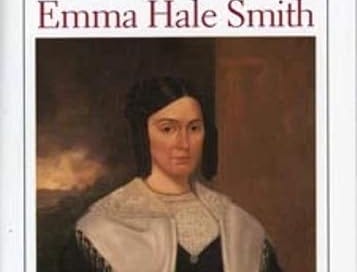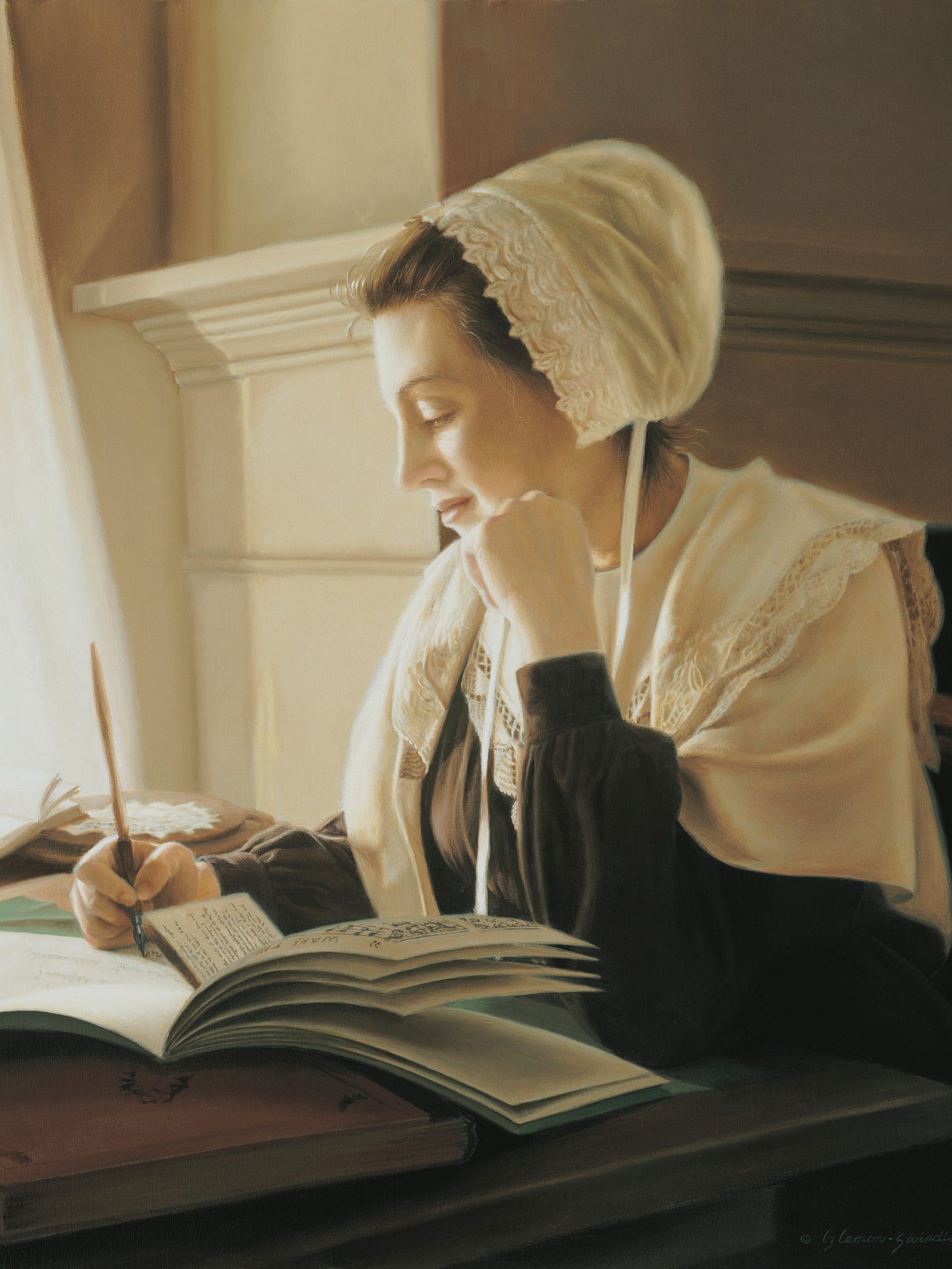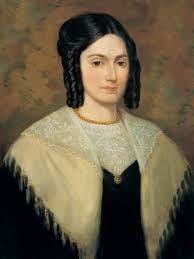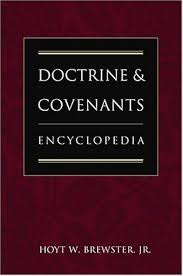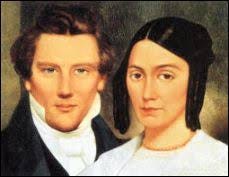Undaunted, Firm, and Unwavering - Unchangeable, Affectionate Emma
A Note on the Historical Background of Doctrine and Covenants Section 25
The newly restored Church of Jesus Christ began to attract several influential characters, including Parley P. Pratt, Sidney Rigdon, Brigham Young, Heber Kimball, and many others. I love Parley P. Pratt’s conversion story in particular, and his record of his experiences in The Autobiography of Parley P. Pratt. (see also here) But besides the Prophet Joseph Smith and his family members, there may be no more influential and consequential character in the early restoration than the Prophet Joseph Smith’s wife, Emma Hale Smith.
Much ink has been spilt on the life and works of Emma Smith, and the title of one popular book sums up what most people know about her: Mormon Enigma: Emma Hale Smith.
One section in the Doctrine and Covenants that helps to make Emma Hale Smith less of an enigma is section 25. While it doesn’t remove all of the mystery, this revelation from gives us a good starting point, namely, that Emma Smith was an elect lady.
Lyndon W. Cook’s The Revelations of the Prophet Joseph Smith contains helpful historical and biographical background for D&C section 25:
Historical Note. Section 25 is a revelation give through Joseph Smith for his wife, Emma. Just prior to Joseph’s receiving this revelation, both Joseph and Emma suffered much humiliation and harassment from non-Mormons in Chenango and Broome counties in New York. Herein Emma Smith is counseled not to “murmur,” designated as an “elect lady,” and requested to make a selection of “sacred hymns.”
Writing of his affection for Emma twelve years later, the Prophet said,
‘What unspeakable delight, and what transports of joy swelled my bosom, when I took by the hand, on that night, me beloved Emma - she that was the wife, even the wife of my youth, and the choice of my heart. Many were the reverberations of my mind when I contemplated for a moment the many scenes we had been called to pass through, the fatigues and the toils, the sorrows and sufferings, and the joys and consolations, from time to time, which had strewed our paths and crowned our board. Oh what a commingling of thought filled my mind for the moment, again she is here, even in the seventh trouble - undaunted, firm, and unwavering - unchangeable, affectionate Emma! (pp. 35-36)
Cook’s historical note continues:
On 30 April 1832, members of the Literary Firm (the organization responsible for Church publications) met in Independence, Missouri, and directed William W. Phelps “to correct and print the hymns which had been selected by Emma Smith in fulfillment of the revelation.” But the destruction of the church printing press in Independence delayed the printing of the hymns, and Church leaders in Kirtland renewed efforts to print the work in September 1835. On 14 September 1835 it was "decided that Sister Emma proceed to make a [more complete] selection of sacred hymns according to revelation, and that President W.W. Phelps be appointed to revise and arrange them for printing.” The Church hymnal, which appeared about February 1836, contained a preface, apparently written by Phelps, and ninety hymns. Only the words were printed; no music was included. Forty-two of the hymns had appeared earlier in Church periodicals. Thirty-four were authored by Mormons: twenty-six by W.W. Phelps, three by Parley P. Pratt, one by Thomas B. Marsh and Parley P. Pratt, and one each by Eliza R. Snow, Edward Partridge, Philo Dibble, and William C. Gregg. On 7 October 1839 a conference of the Church voted to reject a small collection of hymns published by David W. Rogers in New York in 1838. Twenty days later the same conference authorized Emma Smith to prepare a second edition of the 1835 hymnal. Although Brigham Young, Parley P. Pratt, and John Taylor published a hymn book for the Saints in England in 1840, the second official Church hymnal, selected by Emma Smith, was published in Nauvoo in 1841 under the direction of Ebenezer Robinson. Plans were under way for a third edition of Emma’s hymn book in early 1843. She advertised in the Times and Seasons that “persons having Hymns adapted to the worship of the Church of Jesus Christ of Latter Day Saints, [were] requested to hand them, or send them to Emma Smith, immediately.” There is no evidence, however, that this third edition was ever printed. (pp. 36-37)
Who was Emma Hale Smith? This is Cook’s Biographical Note:
Biographical Note. Emma Hale Smith Bidamon.
Daughter of Isaac Hale and Elizabeth Lewis. Born 10 July 1804 at Harmony, Susquehanna County, Pennsylvania. Married Joseph Smith, Jr., 18 January 1827 at South Bainbridge, Chenango Country, New York. Nine Children: Alvin, Thaddeus, Louisa, Joseph, Frederick Granger Williams, Alexander Hale, Don Carlos, male child, and David Hyrum. Adopted twins: Joseph and Julia Murdock. Assisted as scribe in translation of Book of Mormon. Baptized 28 June 1830 by Oliver Cowdery. Given revelation July 1830; instructed to prepare a hymn book for Church. Confirmed member of Church about 1 August 1830. Moved from Harmony to Fayette, New York, September 1830. Moved with husband to Kirtland, Ohio, January 1831. Resided in Hiram, Ohio, September 1831-September 1832. Moved back to Kirtland, Ohio, September 1832l resided there until 1838. Moved to Far West, Missouri, 1838, arriving in March. Located temporarily near Quincy, Illinois, 1839 after Mormon expulsion from Missouri. Moved to Nauvoo, Illinois, in summer of 1839. Appointed first president of Female Relief Society 17 March 1842. Sealed to Joseph Smith 28 May 1843 and endowed before 28 September 1843. Did not migrate west with main body of Saints 1847. Married Major Lewis C. Bidamon 23 December 1847. No children. Died at Nauvoo, Hancock Country, Illinois, 30 April 1879. (p. 37)
The entry on Smith, Emma in Hoyt W. Brewster, Jr.’s Doctrine & Covenants Encyclopedia provides us with more details about this Mormon enigma:
“When sorrows come, the come not single spies, but in battalions,” wrote Shakespeare (Hamlet, act 4, sc. 5, lines 77-78). Such a statement might well describe the seventeen years of married life that Emma Hale Smith shared with her much maligned and persecuted prophet-husband. Even her betrothal to Joseph was anxiety laden, as her father, lacking a testimony of the Prophet’s calling, opposed the union of his daughter to this visionary man. Yielding to her heart, Emma married Joseph Smith on January 18, 1827. This was the year in which Joseph completed his “apprenticeship” and received the plates from which the Book of Mormon was translated. Emma acted as the first scribe in Joseph’s early efforts of translation. She was with the Prophet on several occasions when mobocrats vainly tried to steal the sacred records.
Her soul was scarred with the loss of four little ones who preceded her and Joseph to the other side of the veil. Her husband was forcefully torn from her side on a number of occasions and she was constantly deprived of the sustaining succor of his loving presence. Plural marriage became a severe test to this woman of sorrows, and her state of mind following the martyrdom of her beloved husband might well be described in Solomon’s words: “By sorrow of the heart the spirit is broken” (Prov. 15:13)
When the Saints came west, Emma remained behind in Nauvoo. Although “every effort” was made to extend to her help in making the journey, “no amound of pleading, no amount of persuasion or kindness” could dissuade her from her chosen course (LJFS, 130).
It is ironic that during the same week in which Brigham Young officially became the President of the Church and reorganized the First Presidency, Emma married outside the faith. She became the wife of Lewis C. Bidamon, a resident of Nauvoo, on December 23, 1847, and died at Nauvoo on April 30, 1879.
Although in her later years she chose to remain separate from the Church founded by her prophet-husband, Emma’s impact in the Church endured. Her call to compile the first hymn-book for the Church (D&C 25) and her service as the first president of the Relief Society are footnotes of faithfulness that cannot be erased. We shall best leave to futurity, and the just and benevolent judgment of an all-wise Father, to determine Emma’s place in the eternities. See also: Elect Lady. (pp. 526-27)
“It had been difficult,” Backman and Cowan observe, “for her [Emma] to understand why she couldn’t have the reassurance that could come through seeing the plates, which had already been shown to several others.” (Joseph Smith and the Doctrine and Covenants, p. 33) Thus, D&C 25 was a revelation from the Lord to Emma to give her comfort and direction. This revelation was given through Joseph Smith the Prophet, at Harmony, Pennsylvania, in July 1830 (see the heading to section 24), to manifest the will of the Lord to Emma Smith, the Prophet’s wife.
According to McConkie’s section heading, in this revelation Emma Smith is identified as an elect lady, called to aid and comfort her husband, and called to write, expound scriptures, and select hymns. The Lord explains that the song of the righteous is a prayer unto Him and that the principles of obedience in this revelation are applicable to all.
We have much more to learn from and about this elect lady, Emma Smith, and the Lord’s revelation to her in D&C 25, and we will begin by examining D&C 25 in the following post.


